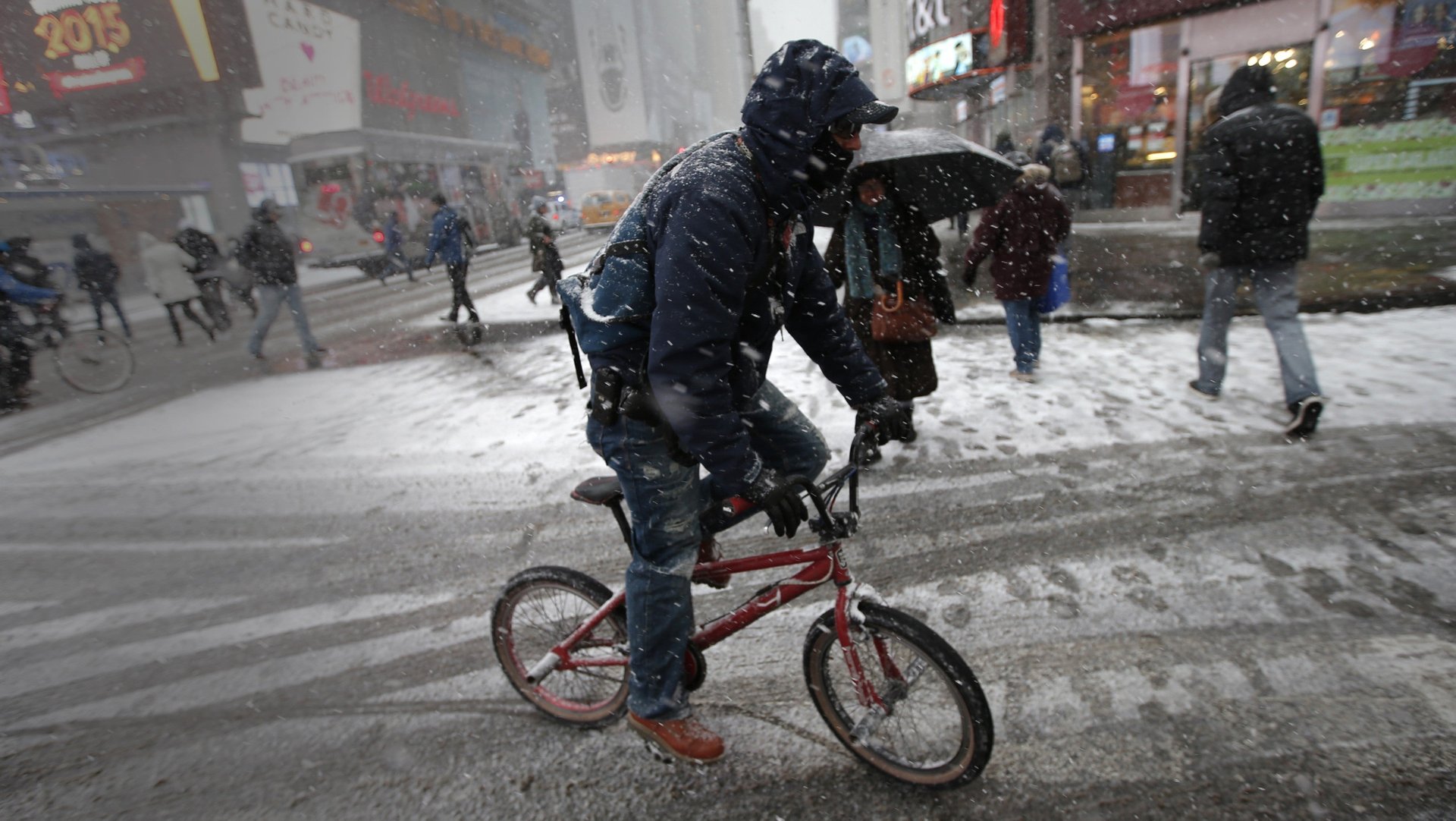So, how much better do New Yorkers actually tip for Seamless during terrible weather?
Maybe you realized it while staring regretfully at a fridge of only ketchup, beer, and expired milk. Or maybe you didn’t want to brave the pre-onslaught lines at Whole Foods to stock up. Whatever the reason, here you are, preparing to place an online Seamless order that will require another human being to venture into a godforsaken blizzard to deliver your food.


Maybe you realized it while staring regretfully at a fridge of only ketchup, beer, and expired milk. Or maybe you didn’t want to brave the pre-onslaught lines at Whole Foods to stock up. Whatever the reason, here you are, preparing to place an online Seamless order that will require another human being to venture into a godforsaken blizzard to deliver your food.
That’s all very well and good. So long as Seamless is operational, and local regulators allow it, there’s no reason you shouldn’t exercise your capitalist right to have tom yum soup brought to the door. But you should probably be leaving a much, much bigger tip as well.
How much better do New Yorkers actually tip during snowstorms? We reached out to GrubHub/Seamless to see. The company provided daily data on the average percent tipped in New York City for 2014 and 2015. Here’s what that looks like, with January-March broken out for each year, and then the entire period:
See those spikes? Those are snowstorms! (And one wind event!)
To figure that out, we crosschecked Seamless’s daily New York City data against mentions of snow/ice/adverse winter weather in the National Weather Service’s New York database of “significant weather events.” Because these are reported for the entire state of New York, we used the details provided for Central Park as a measuring stick for New York City. That really big spike on Jan. 21, 2014? Nearly a foot of snow fell in Central Park, according to National Weather Service records. Feb. 13 the same year? That was a nor’easter.
The good news is that people do tip more during adverse winter weather. The bad news is that it’s not by much! The data, you’ll notice, hover in a tight range around 14.5%. This is likely because 15% is the default tip selection on Seamless (other options: 10%, 20%, custom tip, tip with cash). Keep in mind also that Seamless has provided a daily tipping average, which means a few large or small tips could skew it in either direction. One possibility is that during snowstorms, some people give very generous tips, and a critical mass stick right at 15%—hence why the average only nudges up. It’s also possible that some customers are handing out good cash tips that Seamless can’t track.
Even so, as a city, New York’s snowstorm tips are pretty shoddy. (New Yorkers also seem to have gotten cheaper from 2014 to 2015.) Just one percentage point more for your deliveryman to bike through wind, ice, and snow? On a $20 order, that’s a difference of $0.20.
So go ahead, order that tom yum soup. But when it comes time to leave the tip, be a good human. Try to do better.